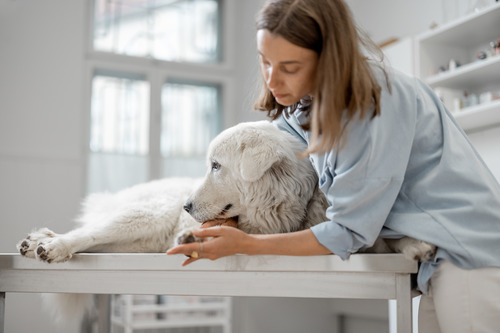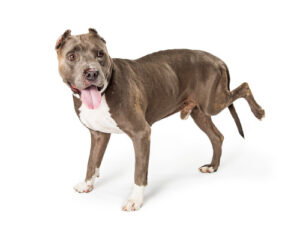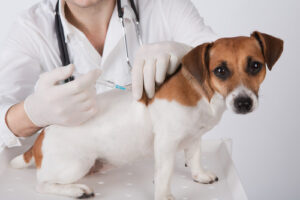Dog seizures can be alarming and stressful for pet owners, especially if you’re witnessing one for the first time. Understanding what a dog seizure looks like can help you stay calm and take appropriate steps to ensure your pet’s safety. In this blog, we’ll explore the signs and symptoms of dog seizures, the different types of seizures, what you should do during a seizure, and when to seek veterinary care. If you suspect your dog is having a seizure, please call Minnieville Animal Hospital at (703) 680-4000 for professional assistance.
Signs and Symptoms of Dog Seizures
Recognizing the signs and symptoms of dog seizures is crucial for identifying and managing these episodes. Dog seizures can manifest in various ways, and understanding these signs can help you remain calm and provide the necessary care.
- Convulsions and Muscle Twitching: One of the most common signs of a seizure is uncontrolled convulsions. Your dog may experience violent muscle contractions, twitching, or jerking movements. These movements can be quite pronounced and are usually accompanied by a loss of control over bodily functions.
- Loss of Consciousness: During a seizure, your dog may lose consciousness and appear unresponsive. This can be particularly frightening, but it’s important to remember that your dog is not aware of what’s happening and cannot control their actions.
- Drooling and Foaming at the Mouth: Excessive drooling or foaming at the mouth is another common symptom of dog seizures. This occurs due to increased saliva production and the inability to swallow normally during the episode.
- Paddling Motions: Some dogs exhibit paddling motions with their legs as if they are trying to swim. This can happen when they are lying on their side or back and is a result of the brain’s erratic signals during a seizure.
- Vocalization: Dogs may vocalize during a seizure, making unusual sounds such as whining, barking, or howling. These vocalizations can be distressing to hear but are a normal part of the seizure process.
- Temporary Paralysis or Stiffness: After the convulsions, some dogs may experience temporary paralysis or stiffness in their limbs. This phase, known as the postictal phase, can last from a few minutes to several hours as your dog recovers.
Types of Dog Seizures
Dog seizures can be categorized into different types based on their characteristics and how they affect your pet. Understanding the types of seizures can help you better identify and describe the episodes to your veterinarian.
Generalized Seizures
Generalized seizures, also known as grand mal seizures, are the most common type of seizure in dogs. These seizures involve the entire brain and typically result in widespread muscle convulsions and loss of consciousness. Generalized seizures can last from a few seconds to several minutes and may be followed by a period of disorientation or lethargy.
Focal Seizures
Focal seizures, or partial seizures, affect only a specific part of the brain and can cause localized symptoms. These seizures may manifest as twitching or jerking in one limb or side of the body, unusual head movements, or behavioral changes such as excessive licking or snapping at the air. Focal seizures can sometimes progress to generalized seizures.
Cluster Seizures
Cluster seizures are multiple seizures that occur within a short period, usually 24 hours. These can be particularly concerning as they indicate a more severe underlying condition. If your dog experiences cluster seizures, it is important to seek immediate veterinary care.
Status Epilepticus
Status epilepticus is a serious and life-threatening condition where a seizure lasts longer than five minutes or multiple seizures occur without the dog regaining consciousness in between. This type of seizure requires emergency veterinary intervention to prevent brain damage or death.
What to Do During a Dog Seizure
Witnessing a dog seizure can be overwhelming, but knowing what to do can make a significant difference in your pet’s safety and recovery.
- Stay Calm: Your dog is unaware of the seizure and cannot control their actions. Staying calm will help you think clearly and act effectively.
- Ensure Safety: Move any objects that could harm your dog out of the way. Place a soft blanket or cushion under their head to prevent injury. Avoid putting your hands near their mouth, as dogs may unintentionally bite during a seizure.
- Time the Seizure: Use a clock or stopwatch to time the duration of the seizure. This information will be important for your veterinarian to assess the severity and frequency of the episodes.
- Do Not Interfere: Avoid trying to restrain your dog or stop the seizure. Let the episode run its course while ensuring they are safe from harm.
- Comfort Your Dog: Once the seizure has ended, stay close to your dog and offer comfort. Speak in a soothing voice and gently stroke them to help them feel secure as they recover.
When to Seek Veterinary Care
Knowing when to seek veterinary care is crucial for managing dog seizures effectively. While some seizures may not require immediate attention, others necessitate prompt medical intervention.
First-Time Seizures
If your dog experiences a seizure for the first time, it is important to contact your veterinarian immediately. First-time seizures can be indicative of an underlying health issue that needs to be addressed. Your vet will perform a thorough examination and may recommend diagnostic tests to determine the cause.
Prolonged Seizures
Seizures lasting longer than five minutes, known as status epilepticus, require emergency veterinary care. Prolonged seizures can lead to brain damage and other serious complications if not treated promptly.
Frequent Seizures
If your dog has multiple seizures within a short period (cluster seizures), it is essential to seek veterinary attention. Cluster seizures can be more difficult to manage and may indicate a more severe underlying condition.
Changes in Behavior
After a seizure, your dog may exhibit changes in behavior such as disorientation, aggression, or lethargy. While some behavioral changes are normal during the postictal phase, prolonged or severe changes should be evaluated by a veterinarian.
Supporting Your Dog After a Seizure
Caring for your dog after a seizure is just as important as managing the seizure itself. Providing a calm and supportive environment can aid in their recovery.
- Create a Safe Space: Ensure your dog has a quiet and comfortable place to rest after a seizure. Reduce noise and activity levels in your home to help them recover peacefully.
- Monitor Their Behavior: Keep an eye on your dog’s behavior and note any unusual symptoms or changes. This information will be valuable for your veterinarian during follow-up visits.
- Maintain a Routine: Sticking to your dog’s regular routine can provide a sense of stability and security. Consistent feeding, exercise, and sleep schedules can help them feel more at ease.
- Provide Plenty of Water: Seizures can cause dehydration, so make sure your dog has access to fresh water. Encourage them to drink, but do not force it if they are not interested.
- Consult Your Veterinarian: Regular check-ups with your veterinarian are essential for managing your dog’s condition. Your vet can provide guidance on medications, lifestyle changes, and any necessary adjustments to their care plan.
Providing Continuous Care and Support for Your Dog
Understanding what a dog seizure looks like and how to respond can make a significant difference in your pet’s well-being. If you have any concerns about your dog’s health or need assistance, please call Minnieville Animal Hospital at (703) 680-4000. Our team is here to support you and your pet through every step of their care journey.






